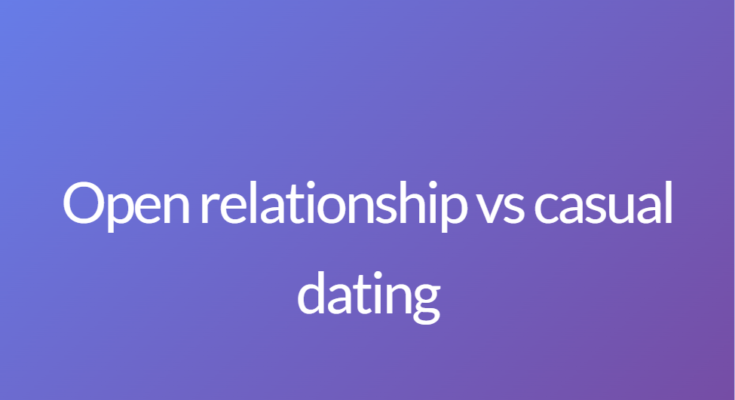Introduction:
In today’s modern dating scene, many people are exploring different types of relationships outside of the traditional monogamous, exclusive partnerships. Two popular choices that individuals often consider are open relationships and casual dating. While they might seem similar at first glance, there are significant differences between the two. In this article, we will explore what sets open relationships and casual dating apart from each other.
Difference between Open Relationships and Casual Dating:
1. Definition:
Open Relationship: An open relationship is a form of non-monogamous partnership where both individuals involved are aware and consent to having multiple romantic and/or sexual relationships simultaneously.
Casual Dating: Casual dating refers to a relationship dynamic where individuals engage in non-exclusive, often short-term connections without any long-term commitment or expectations.
2. Emotional Connection:
Open Relationship: In an open relationship, emotional connections can form with multiple partners. Along with physical intimacy, individuals involved in open relationships seek emotional fulfillment from more than one person.
Casual Dating: While emotional connections can still develop in casual dating, they are typically much less intense. Individuals involved in casual dating often prioritize the fun and enjoyment of the present moment without focusing too much on long-term emotional attachment.
3. Level of Commitment:
Open Relationship: Open relationships usually involve a higher level of commitment compared to casual dating. Partners in open relationships often invest time and effort in building meaningful connections with multiple people, with the intention of maintaining these relationships in the long term.
Casual Dating: Casual dating involves minimal commitment, as it is more about enjoying the company of others without any long-term obligations. It is common for individuals in casual dating scenarios to keep their options open and engage with multiple partners simultaneously.
4. Communication and Boundaries:
Open Relationship: Communication and establishing clear boundaries are key components of successful open relationships. Since multiple partners are involved, open communication is vital to ensure all parties are comfortable with the arrangement and that their needs and expectations are met.
Casual Dating: Communication and boundaries are still important in casual dating, but they are typically less formal or structured compared to open relationships. Individuals involved in casual dating may have an understanding of expectations but may not discuss them as explicitly as in open relationships.
5. Jealousy and Possessiveness:
Open Relationship: Open relationships require a high level of trust and emotional maturity, as jealousy and possessiveness can arise when one partner engages with others. However, individuals in open relationships usually work through these emotions by practicing open and honest communication.
Casual Dating: Jealousy and possessiveness are generally less common in casual dating since there is usually no expectation of exclusivity. However, if one person becomes emotionally invested while the other remains casual, feelings of jealousy may arise.
Conclusion:
While open relationships and casual dating share some similarities, such as non-monogamy and the freedom to explore connections outside of traditional partnerships, there are notable differences between the two. Open relationships typically involve more emotional connection, commitment, and communication, while casual dating is focused on enjoying the present moment without the expectation of long-term commitment. It is crucial to understand these differences to make informed decisions that align with your personal preferences and relationship goals.



